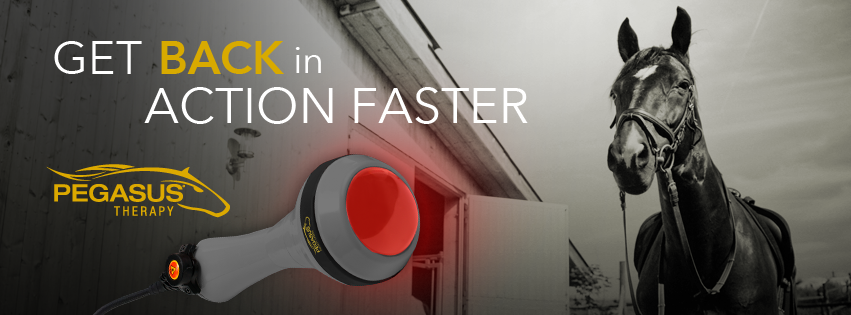The Power of Equine Therapy for Stress And Anxiety, PTSD, and Psychological Recovery
The Power of Equine Therapy for Stress And Anxiety, PTSD, and Psychological Recovery
Blog Article
Reviewing the Efficiency of Laser Treatment in Equine Treatment for Injury Recovery
The assessment of laser treatment's effectiveness in equine injury rehab rests on multiple aspects, consisting of healing time, discomfort mitigation, and tissue regrowth. Professional studies recommend remarkable enhancements in conditions like tendonitis and osteoarthritis, connected to boosted cellular function and raised ATP manufacturing. Vets frequently observe remarkable end results with laser treatment compared to conventional techniques, placing it as a crucial component in equine treatment. The necessity for continuous monitoring and personalized treatment strategies can not be overemphasized. What certain professional proof sustains these cases, and just how do vets implement these protocols in practice?
Comprehending Laser Therapy
Laser treatment has actually come to be an essential tool in veterinary medicine, specifically in the therapy of equine conditions. Known for its non-invasive nature and efficiency, laser treatment includes the application of particular wavelengths of light to boost cells repair service and decrease inflammation. This healing method is progressively favored for its capacity to speed up the healing procedure in equines experiencing a variety of bone and joint injuries and chronic problems.
The primary system behind laser treatment is its capacity to enhance cellular features. In addition, laser therapy promotes vasodilation, enhancing blood circulation and oxygen delivery to damaged tissues, therefore quickening recovery.
In equine medicine, laser therapy is especially valuable for conditions such as tendonitis, osteoarthritis, and wound healing. The strategy is admired for its pain-relieving residential properties, permitting horses to restore wheelchair and feature extra swiftly. Vets also value its marginal side impacts compared to various other therapy techniques, making it a trusted and secure option for equine care.

Exactly How Laser Therapy Works

Upon absorption, these photons set off a series of biochemical modifications, improving mitochondrial function and bring about boosted adenosine triphosphate (ATP) production. This rise in ATP accelerates mobile metabolic rate, promoting cells fixing and regeneration. Additionally, laser treatment modulates inflammatory feedbacks by impacting cytokine levels and lowering oxidative anxiety, thus easing discomfort and swelling.
One more significant facet of laser therapy is its duty in improving microcirculation. The treatment promotes vasodilation, boosting blood flow and oxygen distribution to damaged cells (Equine Therapy). This facilitates the elimination of cellular particles and sustains the expansion of fibroblasts and collagen synthesis, crucial for wound recovery
Clinical Proof
The effectiveness of laser therapy in equine treatment has been validated with different professional researches, showcasing its restorative prospective throughout an array of problems. A research performed by Turner et al. (2012) showed that steeds treated with low-level laser treatment (LLLT) for ligament injuries showed increased recovery compared to those getting traditional treatments.
Similarly, research study by Johnson and colleagues (2015) concentrated on equine muscle mass injuries, revealing that laser treatment significantly quickened muscle mass fiber regrowth and minimized muscle tightness. Medical evaluations have actually revealed that laser therapy can relieve persistent problems such as osteoarthritis.
Vet Insights

Vets additionally value the adaptability of visit site laser treatment. She points out that laser treatment can be customized to the particular requirements of each horse, making sure ideal outcomes.
Moreover, vets value the capability to integrate laser treatment with various other therapy techniques. This multimodal strategy can enhance overall therapy effectiveness, supplying a detailed service for equine rehab. Such recommendations from seasoned specialists highlight the expanding approval and application of get more laser therapy in equine medicine.
Practical Considerations
A crucial facet of applying laser therapy in equine treatment includes understanding the practical factors to consider that guarantee its efficiency and security. First and primary, it is important to select the proper laser tool, as different types vary in wavelength, power, and penetration deepness. Equine Therapy. Vets have to be skilled in these criteria to tailor therapy protocols successfully to each wikipedia reference injury type
In addition, the frequency and duration of laser treatment sessions need cautious preparation to maximize restorative advantages while reducing any kind of potential unfavorable results. Consistent tracking of the equine's feedback to treatment can direct essential adjustments in the therapy program. Developing a secure and controlled environment throughout therapies is also vital to protect against unintentional exposure to laser discharges, which can damage both the horse and the handler.
Training and accreditation of workers carrying out laser treatment are extremely important to ensure proper technique and to support security requirements. In addition, keeping exact documents of each session, consisting of laser setups and observed end results, is essential for reviewing the total performance of the therapy and for making data-driven choices.
Verdict
Laser therapy has actually emerged as an effective method in equine injury rehab, supplying considerable benefits in healing time, pain alleviation, and tissue recovery. For ideal outcomes, constant monitoring and customized treatment methods stay important in leveraging the complete potential of laser treatment in equine care.
Report this page